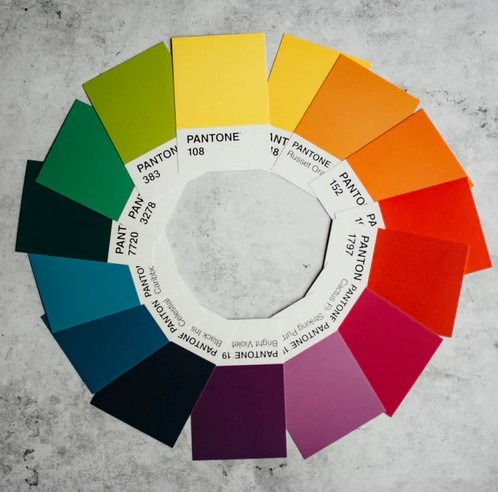As early as 40 thousand years ago, artists invented the first pigments, a combination of chalk, animal fat, soil, and burnt charcoal, creating the basic palette of five colors, including yellow, black, red, white, and brown. Since then, the history of colors has an ongoing discovery through scientific advancement and exploration.
The artists continued to experiment with various colors in ways never seen before. And these historical benchmarks continue to encourage evolution, and the color wheel is one of these historical benchmarks. The inventor of the first color wheel was Sir Isaac Newton – a renowned mathematician.
What is a Color Wheel?
An abstract illustrative organization of color shades around a circle is known as a color circle or color wheel. Moreover, it shows the relationship between primary, secondary, and tertiary colors. Some sources use the terms color circle and color wheel interchangeably; one term may be more prevalent in particular versions or particular fields, as mentioned earlier.
For example, some reserve the term color wheel for mechanical rotating devices, such as Newton disc, filter wheels, or color top. Others classify different color wheels as a color scale, color chart, and color disc varieties.
A Brief History of the Color Wheel
Sir Isaac Newton, in his book Opticks, presented a color circle/wheel. He illustrated the relations between colors. Newton noticed that light does not reflect only white light off the prism but a spectrum of colors. He noted down the different hues and believed harmonious relationships shared by the rainbow of colors.
Moreover, to discover the harmonious relationship between each hue, Newton compared them to the hues of music. He identified each shade corresponding with a musical note. Newton then arranged those musical notes in a square and placed red, orange, blue, violet, yellow, indigo, and green into a natural progression on a rotating disc. Newton then checked if those colors interact with each other visually, and this is how he came up with a color wheel.
The division of the circle of Newton, based on the intervals of a Dorian Musical scale, is of unequal size. The latest color wheels include purples (between violet and red) and have equal-sized hue divisions. Color psychologists and scientists often use additive primaries, blue, green, and red.
James Clerk Maxwell showed that it is possible to prepare all the hues, but not all colors, from three primary colors (blue, green, and red). To get the shades, you have to mix these primary colors in the appropriate proportions.
Colors of the Color Wheels
Opponent Process Model
The basis of some color wheels is the four opponent-process colors: yellow, green, red, and blue.
Trichromatic Model
Most color wheels are based on six intermediate colors formed by mixing primary and secondary colors (known as tertiary colors), three secondary colors, and three primary colors, for a total of twelve divisions.
Subtractive
The typical artists’ pigment or paint color wheels include yellow, red, and blue primary colors. The corresponding secondary colors are violet or purple, orange, and green. The tertiary colors are yellow-orange, red-purple/violet, blue-green, green-yellow, orange-red, and violet/purple-blue.
Non-digital visual artists typically use blue, yellow, and red primaries (RYB color model) arranged around their color wheel at three equally spaced points. Printers, who use modern subtractive color methods, use cyan, yellow, and magenta as subtractive primaries.
Interior and intermediate points of color circles and wheels represent color mixtures. The center of gravity in paint or subtractive color wheel is usually black.
Additive
A color wheel based on red, blue, green additive primaries (RGB model) has yellow, magenta, and cyan as secondary colors. The additive has the same arrangement of colors around the circle, like yellow, magenta, and cyan subtractive primaries, with blue, green, and red being secondary colors.
The center in an additive color circle is gray or white, indicating a mixture of different wavelengths. The simple geometric transformation of the RGB cube into cylindrical form are HSV and HSL colors. You can think of the outer, middle circle of the HSV cylinder – or the outer top circle of the HSV cylinder – as a color wheel.
Conclusion
Color wheels are nowadays the need of artists, painters, and other art professionals. Although it has an ancient history, discoveries are still evolving. Moreover, there are different color models the artists use in their color wheels according to their needs.
